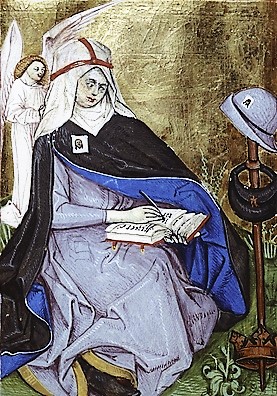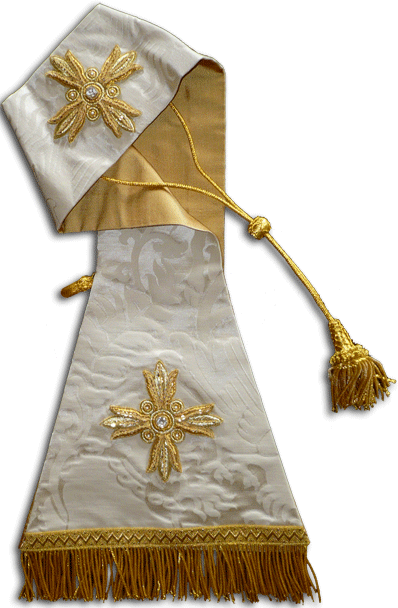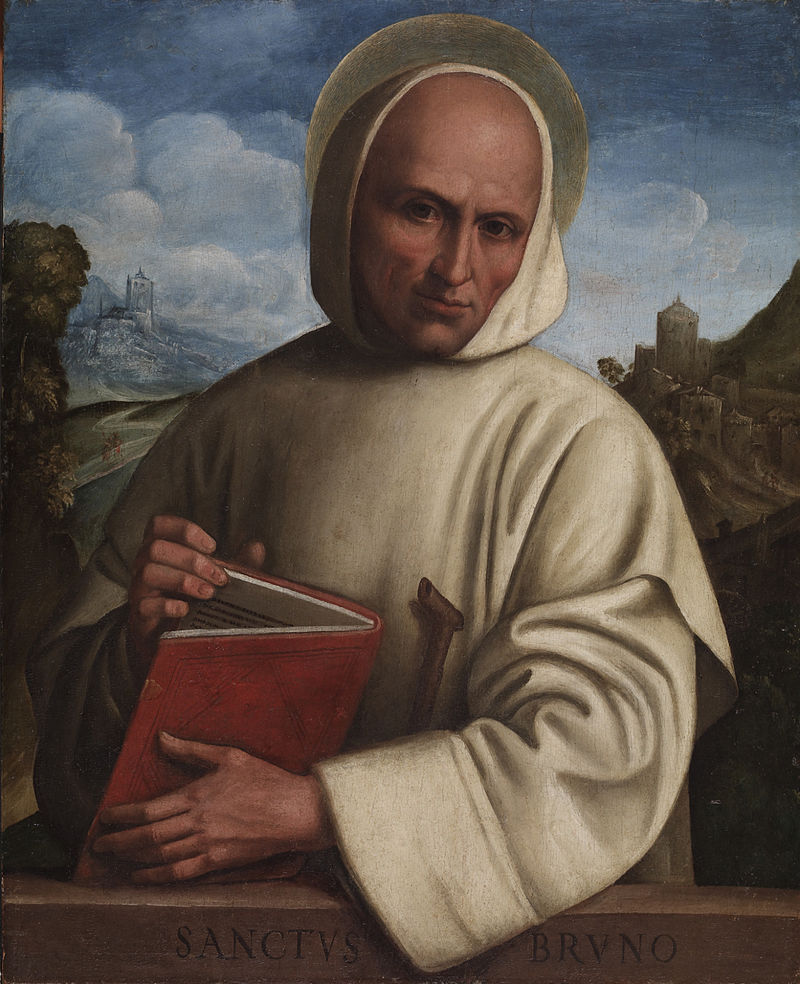Text from The Saint Andrew Daily Missal,
unless otherwise stated.
Saint Bridget.
Widow.
Feast Day 8 October.
Double.
White Vestments.

The Vision of Saint Bridget.
The Risen Christ, displaying his wound from Longinus, inspires the writing of Saint Bridget.
Detail of Initial Letter "T", miniature, dated 1530, probably made at Syon Monastery, England,
Detail of Initial Letter "T", miniature, dated 1530, probably made at Syon Monastery, England,
a Bridgettine House. (BL Harley MS 4640,f.15).
This File: 23 October 2010.
User: Lobsterthermidor.
(Wikipedia)
Saint Bridget was a descendant of the Kings of Sweden. She was married to the Prince of Mercia, and brought up her eight children in a holy way; one of them was Saint Catherine of Sweden. She led her husband to such a virtuous life that he renounced the World to submit himself to The Cistercian Rule, in the Monastery of Alvastra, Sweden; he died there in the odour of Sanctity (1344), and is known as Blessed Ulpho.Bridget became still more fervent in her holy widowhood "devoting herself to all manner of good works and persevering day and night in Prayer" (Epistle). Like a man who has discovered a treasure and who sells all he possesses to acquire it (Gospel), she divided her riches among her children, and, detached from everything, she sought only the Kingdom of Heaven.

Saint Bridget, in the Religious Habit and the Crown of a Bridgettine Nun,
in a 1476 Breviary of the form of The Divine Office unique to her Order.
Author: Anonymous.
(Wikimedia Commons)
Filled with The Fear of God, she subjected her body to the severest penance (Introit), and Jesus, Whom she thus imitated in His Passion, rewarded her by revealing Heavenly Secrets to her (Collect). He gave her the Constitution of The Order which she Founded under the Rule of Saint Augustine. She died in Rome in 1373.
Mass: Cognóvi.

THE SAINT ANDREW DAILY MISSAL
THE SAINT ANDREW DAILY MISSAL
Available (in U.K.) from
Available (in U.S.A.) from















+(from+In+Caelo+et+in+Terra+Blog).jpg)







